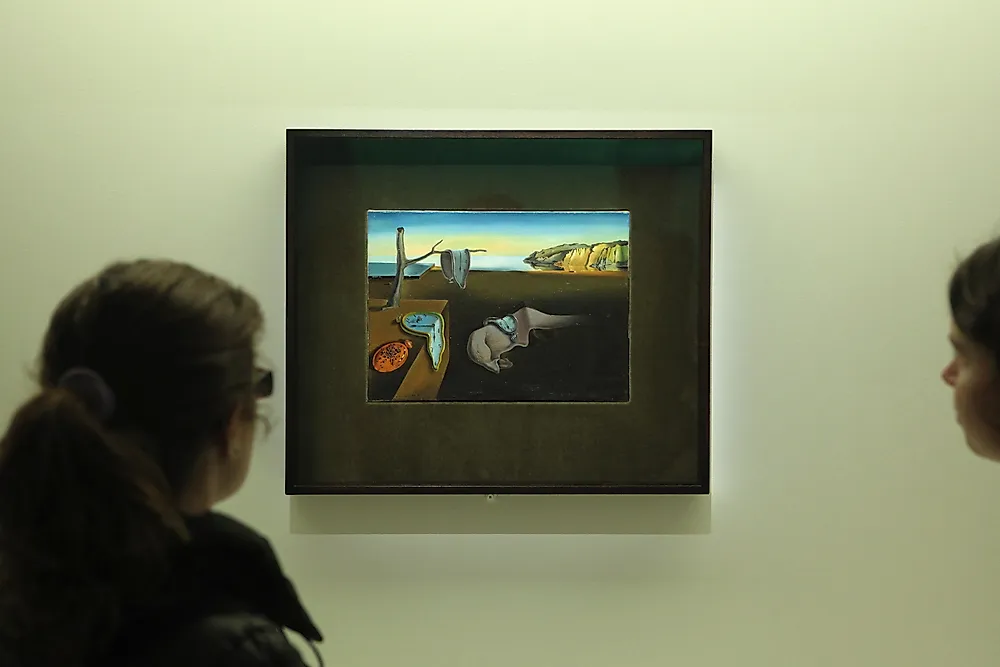Famous Artwork: The Persistence of Memory

The Persistence of Memory is an oil painting done on a canvas measuring 9.5 inches by 13 inches. The painting, like many others of Salvador Dali’s paintings, depicts a beach in his homeland, Catalonia.
Description
In the painting, the beach is cast on the background and shows a peninsula or a large rock outcrop. The primary subject of The Persistence of Memory is four pocket clocks scattered on the painting’s foreground. These pocket clocks are depicted as if they are melting. One pocket clock hangs on a dry twig with another covered in ants. Another pocket clock is cast on a strange figure which resembles a resting or dead monster. In the painting’s background, the artist depicts a clear blue sky without clouds.
Painting Location
The Persistence of Memory was first exhibited in 1932 at the Julien Levy Gallery. The painting was later moved to the Museum of Modern Art in New York City after an anonymous donor donated the piece of art to the museum. It has been in the museum since 1934.
Symbolism
The Persistence of Memory, like many other paintings inspired by the surrealistic movement, has unrealistic features which are used to elicit critical thinking. Over the past decades, scholars have come up with numerous explanations behind the painting. One explanation states that the painter was trying to express his life using the painting with the melting clocks used to represent his diminishing youth (Salvador was 27 years old when he painted the Persistence of Memory) while the empty landscape and dead twig represent the feeling of emptiness he felt at the time. Another explanation behind the painting is that Dali was trying to portray the relativity of time and space as explained in Einstein’s theory of special relativity using the distorted pocket clocks. Other scholars believe that the painting shows a person’s state of dreaming with the clocks showing the sense of the suspension of time that one feels while dreaming. Propagators of this theory also see the distorted weird figure in the middle of the painting as a depiction of a monster as it appears in dreams (or nightmares). In general, the painting is based on the early 20th-century surrealism movement whose members ridiculed the French middle-class who were seen as taking life “too seriously.”
Salvador Dali
Salvador Dali was a 20th-century painter and draftsman from Spain who is credited to have worked on “The Persistence of Memory” painting. Salvador Dali was born on May 11th, 1904 in Figueres, Spain. Dali’s father was a strict disciplinarian and was not impressed by Dali’s early artistic endeavors. Salvador Dali polished his artistic talent in his youth while attending drawing school and had his first public exhibition in 1919 held at the Municipal Theatre in Figueres. Dali’s early paintings featured Cubism which the painter did as an experiment. In the 1920s, Salvador Dali met world-famous painter, Pablo Picasso, who introduced him to the surrealism movement. The painter died on January 23rd, 1989 of heart failure aged 84 years.
Legacy
The Persistence of Memory is the most famous painting attributed to Salvador Dali. The painting is one of the most recognizable exhibits in the Museum of Modern Art and has been referenced in popular culture on numerous occasions.











